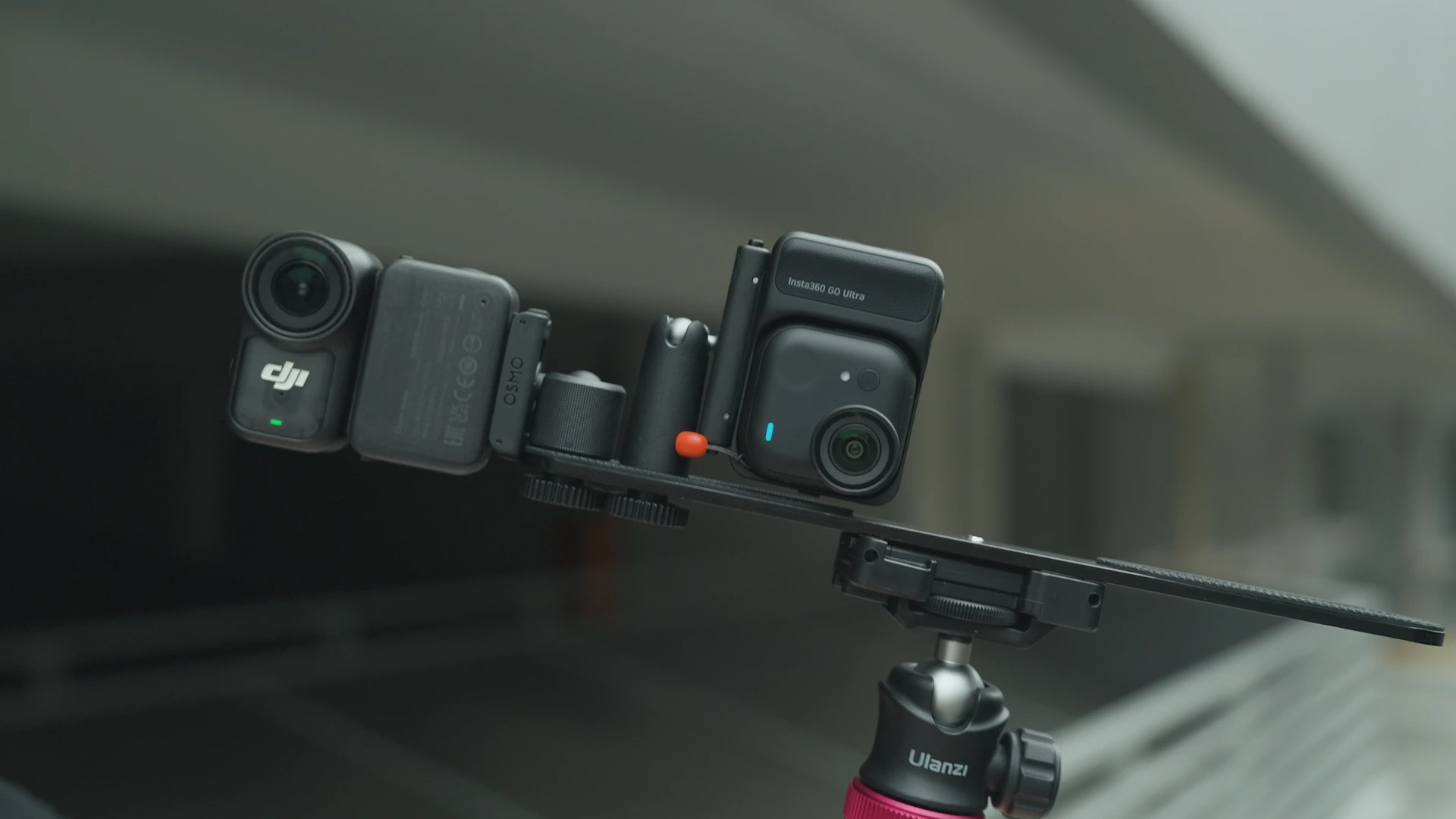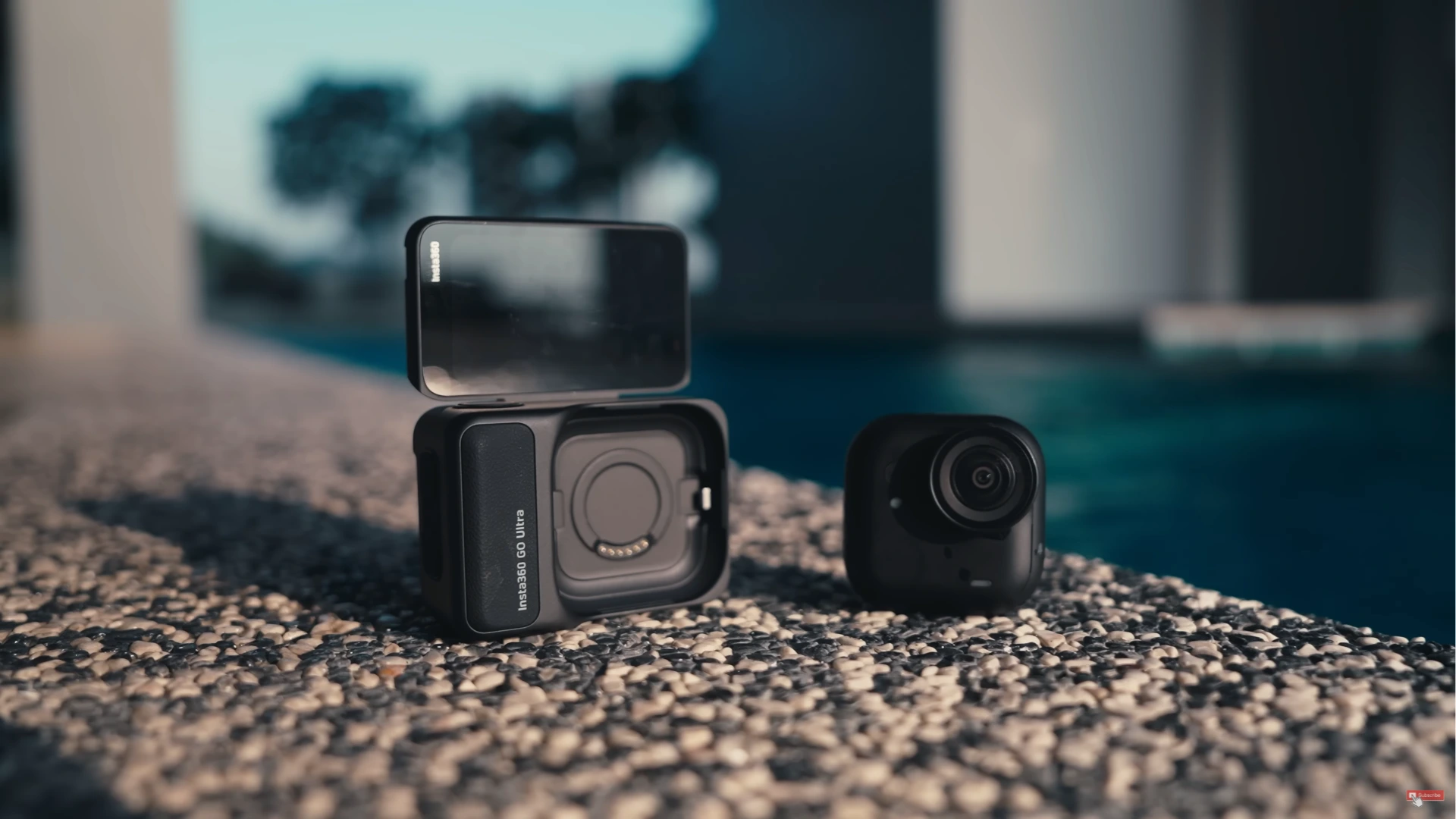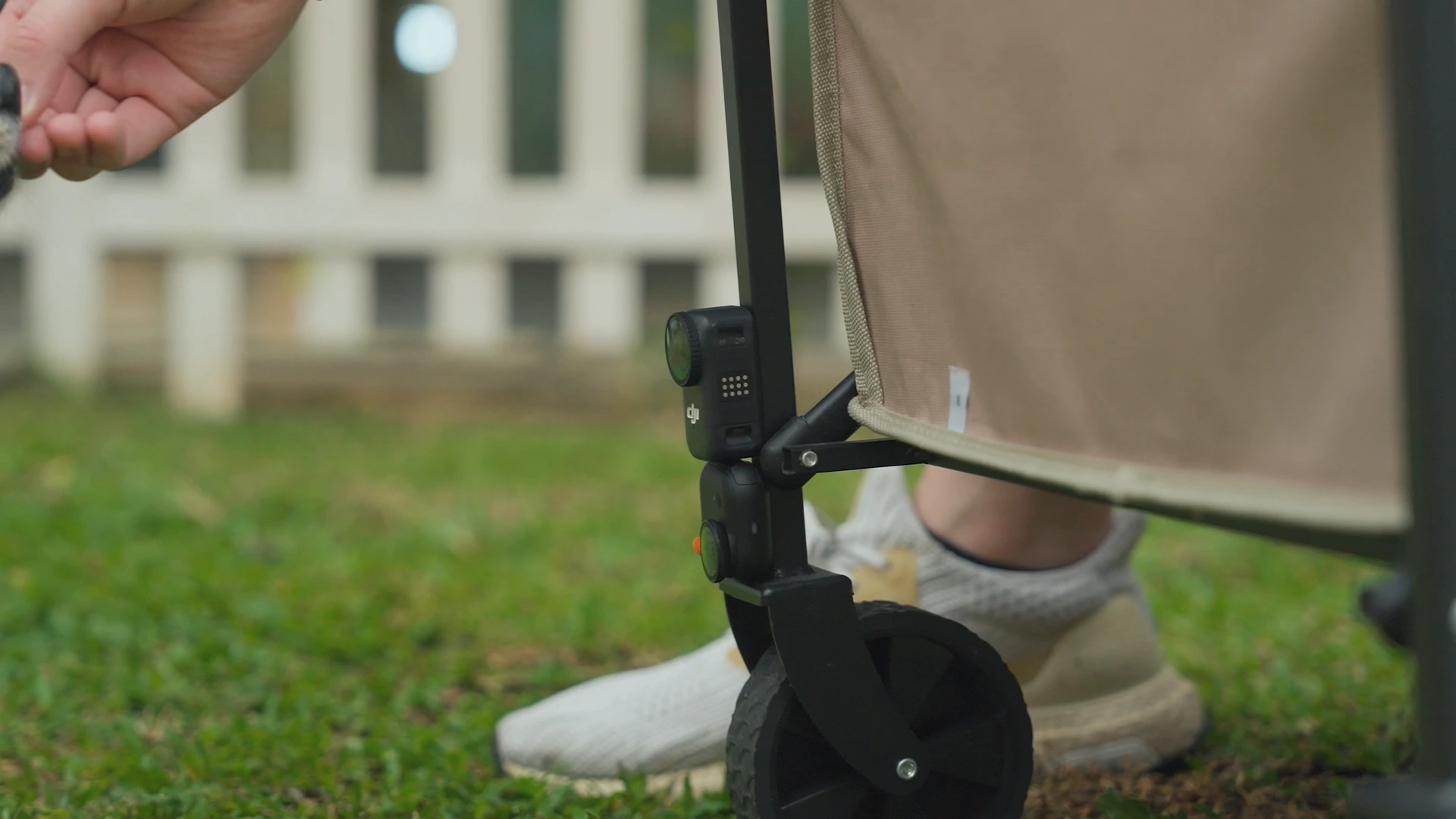
Editor
Celine Low chevron_right
When it comes to action cameras, smaller really is better, especially when you want to capture creative angles without lugging around heavy gear.
We put two of the most compact contenders head-to-head: the Insta360 Go Ultra and the DJI Osmo Nano. Released on 21 August and 23 September respectively, these are each brand’s latest ultra-light cameras, capable of shooting 4K video at 60fps while weighing just over 50g.

But action cameras today aren’t just exclusively for daredevils skydiving out of planes, they can be used for our mundane, day-to-day routines too. Whether you’re filming your morning coffee run or a travel vlog, both the Go Ultra and Osmo Nano feature magnetic backs that make them easy to mount anywhere — perfect for solo shoots or hands-free content creation.
Both cameras promise cinematic shots in pocket-sized bodies. After testing them through everyday moments from walks in an urban setting to late-night drives, there was one that really stood out to us. Let’s break it down.
Design
Both cameras share a similar modular setup: a small magnetic camera unit that docks into a larger base with a touchscreen for remote control and playback. They’re nearly identical in weight, but visually, the Go Ultra looks squarer and slimmer, while the Osmo Nano is longer and slightly bulkier.
The Insta360 Go Ultra embraces a sleek, minimalist design with smooth, curved edges. It’s compact and easily snaps back into its magnetic charging case, which feels as satisfying as clicking a fidget toy. Its rounded form makes it ultra-pocketable, and with black and white colour options.

The DJI Osmo Nano, on the other hand, features a pill-shaped, rounded rectangle body. It slots neatly into its attachable case, but since it’s only available in black, it lacks the personality that Insta360 offers. It’s sleek, yes — just a little more conventional compared to Insta360’s playful, futuristic vibe.

Microphone
The Osmo Nano’s microphone does suppress background noise, but sometimes too aggressively, leaving the person speaking sounding a bit muffled.
Meanwhile, Go Ultra offers more control with wind reduction and voice enhancement presets that make voices pop in outdoor settings. It records audio as clearly as day, the mic keeps both highs and lows crisp, with balanced audio where voices come through cleanly without losing ambient texture.
Performance
The DJI Osmo Nano features a slightly larger 1/1.3-inch sensor but lacks an ambient light sensor. In contrast, the Insta360 Go Ultra has a 1/1.28-inch sensor and includes an ambient light sensor for better automatic exposure control. In terms of perspective, the Go Ultra offers a wider 156° field of view, while the Osmo Nano comes in narrower at 143°.
When shooting in bright light, the Osmo Nano tends to overexpose, blowing out highlights so that skies turn white and objects lose their details in the shadows. The result looks dramatic with a slightly edited feel, as if a “lifestyle” filter was permanently switched on.
The Go Ultra, on the other hand, delivers clean, true-to-life footage. You can still see the clouds in the sky, the texture in shadows, and accurate colours. Its footage looks natural and balanced, just real scenes as your eyes see them.

In low-light settings, both cameras capture a similar level of brightness, but the Go Ultra has a more controlled glow around light sources. With the Nano, you'll see grainier textures, bigger halo from headlights, and motion blur whenever the camera moves.

When it comes to stabilisation, the difference is pretty stark. The Go Ultra keeps horizon lines level and steady, even during fast movement or quick pans. You can also switch effortlessly between horizontal and vertical orientation by simply flipping the camera. The Osmo Nano, however, is limited to horizontal shooting only. Without horizon-lock stabilization, footage can look uneven and shaky, especially when mounted on a hat or while on the move.
Check out our in-depth review of the Insta360 Go Ultra below:
Battery
The Insta360 Go Ultra runs on an advanced stacked battery setup: a 500mAh on the standalone camera and a 1450mAh on the Action Pod. That gives you roughly 70 minutes standalone or 200 minutes with the pod when shooting 1080p at 24fps. In 4K Endurance Mode, you’ll get about 60 minutes standalone plus 170 minutes with the pod. The camera charges fully in 20 minutes, and the pod tops up in 40.
The DJI Osmo Nano uses a traditional jelly-roll battery, slightly larger at 530mAh for the camera and 1300mAh for the dock. You’ll get 90 minutes standalone or 200 minutes docked in 1080p24, and 60 + 149 minutes in 4K mode. Charging takes longer, though — 30 minutes for the camera, 50 for the dock.
While DJI technically offers longer standalone recording at 1080p, Insta360’s faster charging and slightly larger dock capacity make it more reliable for day-long shoots.
So, Which One’s For You?
If you’re seeking realism in your content, reliable stabilisation, and and flexible shooting for both social media and professional work, go for the Insta360 Go Ultra. It’s compact, intuitive, and the footage looks naturally vibrant without heavy post-editing.
But if you prefer a “vlog-style” look, something that's bright, punchy, maybe even a bit filtered, and don’t mind the extra shake or charging time, the DJI Osmo Nano can still be a solid fit, especially for casual users who want plug-and-play simplicity.
If you’re after a simpler, filtered, lifestyle-style look with punchy brightness and quick results, the DJI Osmo Nano might still suit you better. It’s straightforward and reliable, even if the footage leans more toward “fun vlog” than “film-ready.”
With that said, the Insta360 Go Ultra starts from RM1,879 for the Standard Bundle (without memory card), which comes with basic accessories including the magnetic clip and necklace, safety strap and USB-C cable. The DJI Osmo Nano is slightly cheaper at RM1,229 and RM1,409 for the for the 64GB and 128GB models, respectively.
At the end of the day, both action cameras are great choices for creators regardless of the content that's being shot.
Stay updated with ProductNation on here, Instagram & TikTok as well.
Read more news on ProductNation:
